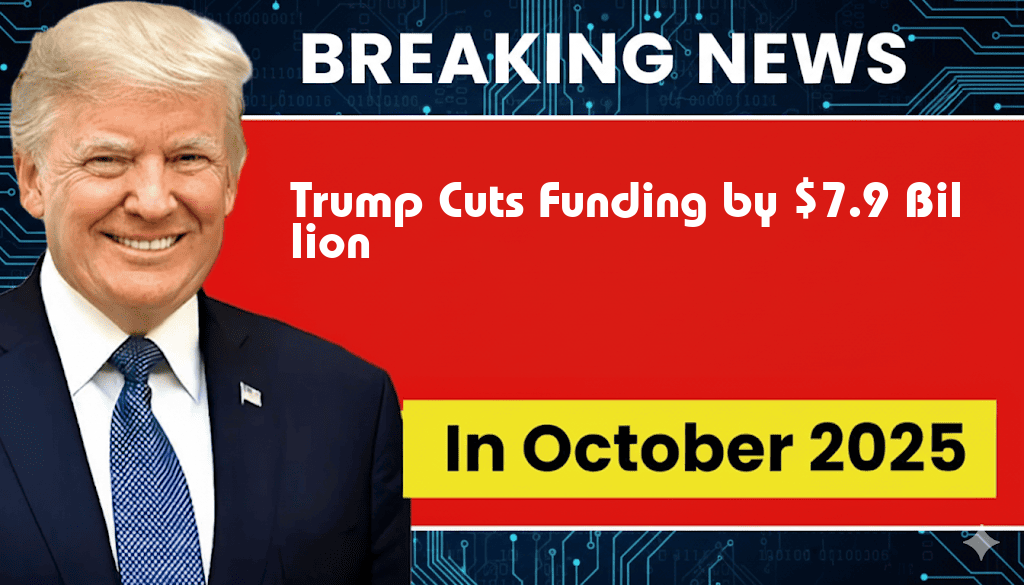In a significant move that has stirred debates across the political landscape, former President Donald Trump announced the implementation of the Rescissions Act, which aims to retract $7.9 billion in federal funding. This act, which targets various programs and agencies, has raised concerns among lawmakers and advocacy groups alike, who argue that the reductions could have far-reaching implications for public services and support systems. Advocates for the act assert that it is a necessary step towards reducing government spending and enhancing fiscal responsibility. However, critics argue that the cuts could disproportionately affect vulnerable populations and essential services. As the political ramifications unfold, both supporters and opponents are preparing for a contentious discourse on the future of federal funding in the United States.
Details of the Rescissions Act
The Rescissions Act is designed to eliminate funding that was previously allocated but remains unspent. The primary objective of this legislation is to streamline government expenditures and eliminate wasteful spending. The act includes provisions that affect a variety of sectors, including education, healthcare, and infrastructure. Here are some of the key components:
- Education Funding: Significant reductions in federal grants aimed at local schools.
- Healthcare Programs: Cuts to public health initiatives and preventive care funding.
- Infrastructure Projects: Stopping funds for certain transportation projects that have not yet begun.
Political Reactions
The announcement has elicited mixed reactions from both sides of the aisle. Supporters of the act, primarily from the Republican Party, argue that the cuts are a necessary measure to rein in federal spending and eliminate inefficiencies. Representative John Smith (R-CA) expressed his support, stating, “We need to prioritize our spending and ensure that taxpayer dollars are used effectively.”
Conversely, Democrats and advocacy groups have voiced strong opposition. Senator Maria Johnson (D-NY) criticized the act, saying, “These cuts will hurt our most vulnerable communities and jeopardize essential services that countless Americans rely on.”
Implications for Federal Programs
The Rescissions Act could have serious implications for various federal programs, particularly those focused on social welfare and public health. Funding cuts could lead to:
- Job Losses: Reductions in federal funding may lead to layoffs in public sector jobs.
- Service Reductions: Essential services such as healthcare, education, and transportation may face significant cutbacks.
- Impact on State Budgets: States could experience budget shortfalls as they rely on federal funds to support local programs.
Economic Impact
Economists are closely watching the potential ripple effects of the Rescissions Act. Some analysts argue that cutting funding may lead to short-term savings but could ultimately hinder long-term economic growth. “Investment in education and infrastructure is crucial for a healthy economy,” noted Dr. Emily Carter, an economist at the Brookings Institution. “These cuts could stifle innovation and reduce the quality of life for many Americans.”
Next Steps and Future Considerations
As the Rescissions Act moves through Congress, negotiations are likely to intensify. Lawmakers from both parties are expected to propose amendments and alternative solutions to address the funding cuts outlined in the act. Stakeholders, including community organizations and advocacy groups, are mobilizing to voice their concerns and influence the legislative process.
In light of the potential impacts, it remains to be seen how this act will shape the federal budget landscape and the broader political discourse. The upcoming months will be critical as discussions unfold and the implications of the Rescissions Act become clearer.
Conclusion
The introduction of Trump’s Rescissions Act represents a pivotal moment in U.S. fiscal policy, with implications that could resonate across various sectors. As legislators grapple with the potential consequences, the debate surrounding government spending and public welfare continues to intensify.
| Sector | Funding Cut Amount |
|---|---|
| Education | $2 billion |
| Healthcare | $3 billion |
| Infrastructure | $2.9 billion |
For further information on the implications of the Rescissions Act, you can visit Forbes or review the details on Wikipedia.
Frequently Asked Questions
What is the Rescissions Act introduced by Trump?
The Rescissions Act is a legislative proposal aimed at reducing federal spending by cutting existing appropriations. In this instance, it seeks to decrease funding by $7.9 billion.
How will the $7.9 billion reduction affect federal programs?
The $7.9 billion reduction may impact various federal programs and services, potentially leading to the scaling back of initiatives and projects that rely on federal funding.
What are the main goals of Trump’s Rescissions Act?
The primary goal of Trump’s Rescissions Act is to promote fiscal responsibility by eliminating unnecessary spending and reallocating resources to more critical areas of the federal budget.
Who supports the Rescissions Act?
Support for the Rescissions Act primarily comes from fiscal conservatives and some members of Congress who advocate for reduced government spending and a balanced budget.
What challenges does the Rescissions Act face?
The Rescissions Act faces challenges in Congress, including opposition from lawmakers who believe that cutting funding could harm vital programs and services that benefit constituents.
